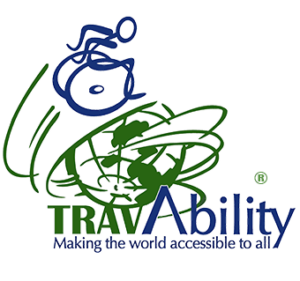Using Disability Inclusive Imagery Effectively
The Market
The disability sector represents more than 20% of the population and is growing in strength. Like all of us, when people with a disability shop, travel or engage in leisure pursuits, they rarely do it on their own. The multiplier is almost a factor of 3 once family, friends or business associates are all taken into account. People with disabilities are a discerning loyal market who want to feel that they belong and are valued as customers or clients. When an able-bodied model is put into a wheelchair that is obviously not their own and the image is then used in a website, publication, or advertisement, it is seen as fake and disingenuous and gives a poor impression to the audience. Using models with an actual disability in your imagery conveys a clear message that you care about genuine representation and creates real employment opportunities for these models.
What Makes a Good Image
Before we explore the technicalities, we need to look at people with a disability as ordinary subjects and customers. Too often images of a person with a disability have a medical theme or are “look at me” inspirational images. In marketing to this audience, as with any other, the aim is to create a connection with the audience that says “I can see myself there”. Imagery of people with a disability should, therefore, reflect the normal customer types and groups that would normally be your customers.
The key elements of a good image are:
- Has emotional appeal
- Is well composed
- Has spontaneity
- Lighting
- Environment/ location Color
- Talent
- Emotional appeal Engaging subject matter Spontaneity Composition & scale
emotional appeal
Emotional Appeal
A good image engages the viewer and stimulates them to want to know more. It immerses them into your story and motivates them to buy your product or service. Most importantly, when its comes to people with a disability, it breaks through the stereotypes and preconceptions by placing them into your environment.
Good Lighting
Effective lighting adds drama to the scene and creates a mood that your clients will want to experience. The “golden hour” is the hour before sunset and the hour after sunrise. It can create the most dramatic lighting. It is important, however, to match the lighting with the experience that your visitors or customers will experience.
A Good Location
A good location inspires your audience and engages with their sense of adventure. It motivates them to plan a visit or trip or to book that special night out.
Use of Colour
Colour is the essence of imagery. It gives a picture energy and life. It creates the mood that will encourage your potential customers to make the effort to book.
Talent
Images should feature real people – they should be authentic, welcoming, engaging, and inviting. Shots should never be over posed or set up, but should reflect the types of activities and responses your guests or customers would make.
They should speak to audience and say: “I can do that” or even better “WOW – can I really do that”.
Engaging Subject Matter
Sometimes, a picture that you have to look a little bit harder for, is the one you cannot ignore!
Images that are a bit unusual or have a story hidden in their detail, can invoke the imagination, and, if they are just a little bit unusual, can cut through and leave a lasting impression on your audience.






















Leave a Reply
Want to join the discussion?Feel free to contribute!